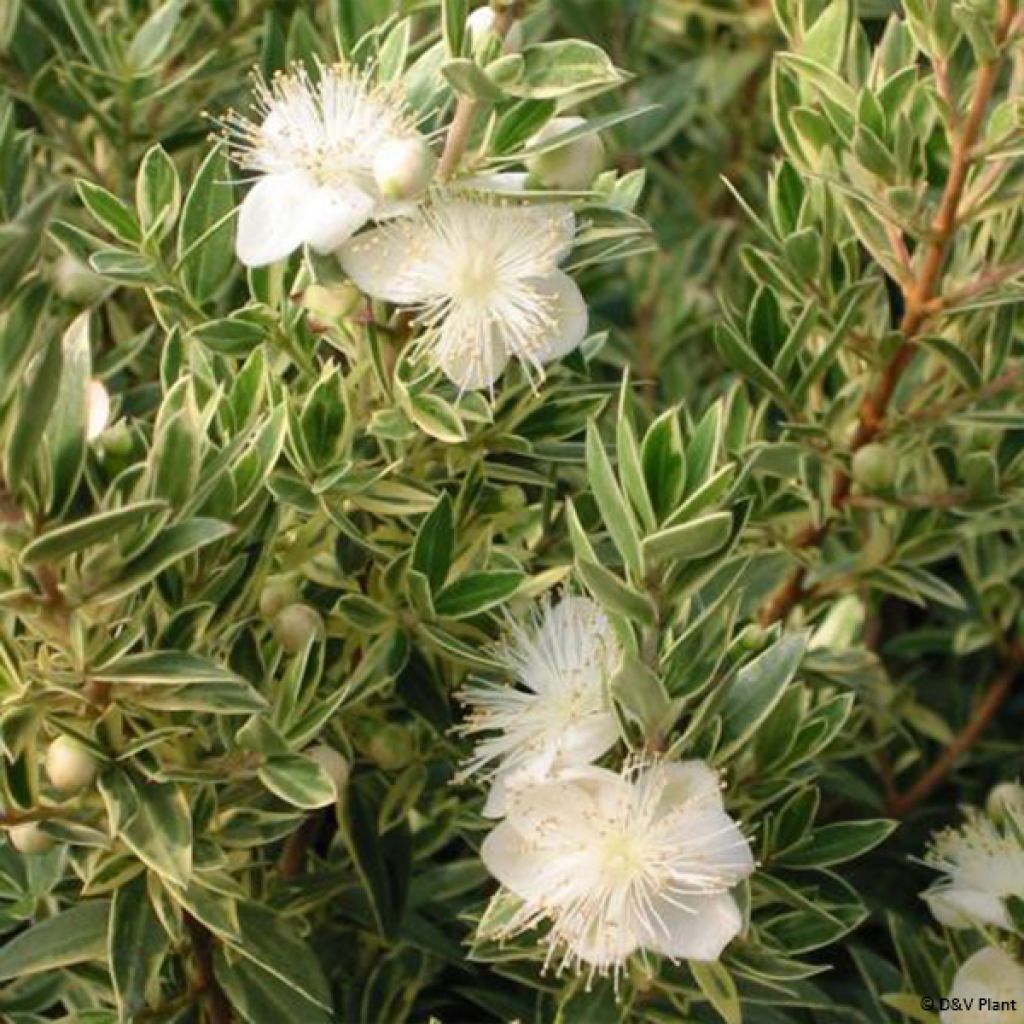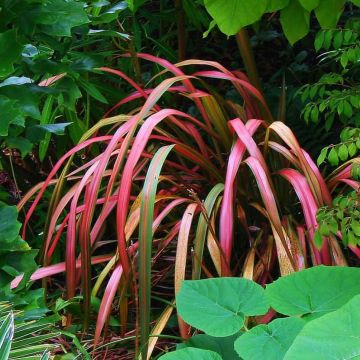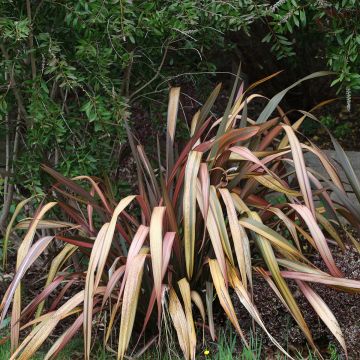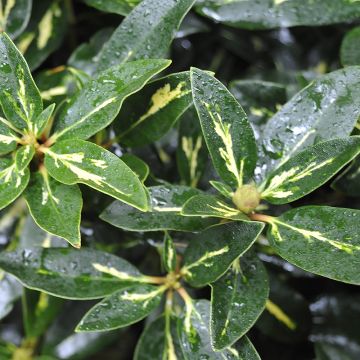

Myrtus communis Variegata - Myrte panaché
Myrtus communis Variegata
Myrtus communis Variegata
Myrtle
Arrived in excellent condition
Claude, 06/08/2025
Special offer!
Receive a €20 voucher for any order over €90 (excluding delivery costs, credit notes, and plastic-free options)!
1- Add your favorite plants to your cart.
2- Once you have reached €90, confirm your order (you can even choose the delivery date!).
3- As soon as your order is shipped, you will receive an email containing your voucher code, valid for 3 months (90 days).
Your voucher is unique and can only be used once, for any order with a minimum value of €20, excluding delivery costs.
Can be combined with other current offers, non-divisible and non-refundable.
Home or relay delivery (depending on size and destination)
Schedule delivery date,
and select date in basket
This plant carries a 24 months recovery warranty
More information
We guarantee the quality of our plants for a full growing cycle, and will replace at our expense any plant that fails to recover under normal climatic and planting conditions.

Would this plant suit my garden?
Set up your Plantfit profile →
Description
Myrtus communis 'Variegata' is a variety of common myrtle that is particularly interesting for its bright evergreen foliage, which is variegated with cream yellow. In terms of flowering, fruiting, and cultivation requirements, it is identical to the dark green myrtle of Mediterranean scrub vegetation. This bush blooms in the heart of summer, punctuating its vegetation with a multitude of small white flowers with protruding stamens, as light as snowflakes. Moderately hardy, this variety is perfect for creating the structure of a dry garden, both in hedges and shrub beds. In colder regions, it can be grown in containers as an orangery plant.
Myrtus communis 'Variegata' belongs to the Myrtaceae family. It is a variegated mutation of the common myrtle that is found in the wild at the edge of oak or pine forests, in scrub vegetation and rocky maquis, from the Mediterranean to Lebanon. It is a slow-growing bush with a naturally dense and bushy habit. It will reach a height of 1.5 to 1.75m (5 to 6ft), sometimes more, with a diameter of 1 to 1.5m (3 to 5ft). The ovate leaves with a pointed tip are remarkably aromatic. An essential oil is extracted from them, which is widely used in perfumery and aromatherapy. They are shiny on both sides and show a light green colour marginated with yellow to cream. The bush flowers generously from July to September, which is surprising for a plant from a dry climate. The small, solitary, 5-petal white flowers, 1cm (1in) wide, open on a large cluster of protruding stamens; they appear in the axils of the leaves, on the current year's shoots. They are followed in autumn by the formation of small ovoid and fleshy fruits, which are black-blue with a powdery hue. They are used in cooking or for making liqueurs.
Brighter than boxwood, free of diseases, adorned with a thousand adorable little flowers in summer, and fragrant, Myrtus communis 'Variegata' would undoubtedly be more widely used in small trimmed or informal hedges and in topiary art if it were a little hardier. It prefers partial shade and slightly acidic soils, tolerates long droughts once well rooted, and requires no special care. Myrtle tolerates pruning very well, in April or October, without compromising flowering. If its vegetation is damaged by a severe winter, it is capable of regenerating from the stump. It can be planted with dwarf pomegranates or flowering pomegranates, agapanthus, arborescent artemisias, and shrubby salvias (microphylla), in a colourful checkerboard or a small Mediterranean-inspired bed. It is easily grown in a large container, accompanying, for example, a four-season mimosa. In a hedge, on the edge of a grove or undergrowth, it can be planted alongside Mexican orange, the Laurel-leaved Rockrose (a large hardy rockrose at -15°C (5°F)), Narrow-leaved Phillyrea, or 'Argenteovariegata' Alaternus Buckthorn.
Myrtus communis Variegata in pictures


Plant habit
Flowering
Foliage
Botanical data
Myrtus
communis
Variegata
Myrtaceae
Myrtle
Mediterranean
Other Myrtus - Myrtle
View all →Planting and care
It requires loose, light, well-drained and not too fertile soil, which is slightly acidic to neutral. A slightly limestone soil is tolerated if it is enriched with humus or compost. Plant it after the last frost in cooler regions, and in September-October in hot and dry climates. It will thrive in partial shade or even in shade in a hot climate. Avoid the scorching midday or afternoon sun that could damage its foliage. An adult specimen is hardy down to -7 or -8°C (19.4 or 17.6°F) at its peak; young specimens will need protection with a winter covering in case of severe frost. It can live for over a century, and is capable of regrowing from the stump when its branches have been affected by fire or frost. To shape it, you can prune the stems in March-April or after flowering to encourage the plant to branch out.
Pot cultivation:
Ensure good drainage at the bottom of the pot, which should be of large volume. Use a lightweight substrate, enriched with leaf compost, and apply a slow-release fertiliser in late winter and autumn. Water generously in summer, while allowing the potting soil to dry between waterings. The more you water, the more your Myrtle will bloom.
Planting period
Intended location
Care
Planting & care advice
-
, onOrder confirmed
Reply from on Promesse de fleurs
Similar products
Haven't found what you were looking for?
Hardiness is the lowest winter temperature a plant can endure without suffering serious damage or even dying. However, hardiness is affected by location (a sheltered area, such as a patio), protection (winter cover) and soil type (hardiness is improved by well-drained soil).

Photo Sharing Terms & Conditions
In order to encourage gardeners to interact and share their experiences, Promesse de fleurs offers various media enabling content to be uploaded onto its Site - in particular via the ‘Photo sharing’ module.
The User agrees to refrain from:
- Posting any content that is illegal, prejudicial, insulting, racist, inciteful to hatred, revisionist, contrary to public decency, that infringes on privacy or on the privacy rights of third parties, in particular the publicity rights of persons and goods, intellectual property rights, or the right to privacy.
- Submitting content on behalf of a third party;
- Impersonate the identity of a third party and/or publish any personal information about a third party;
In general, the User undertakes to refrain from any unethical behaviour.
All Content (in particular text, comments, files, images, photos, videos, creative works, etc.), which may be subject to property or intellectual property rights, image or other private rights, shall remain the property of the User, subject to the limited rights granted by the terms of the licence granted by Promesse de fleurs as stated below. Users are at liberty to publish or not to publish such Content on the Site, notably via the ‘Photo Sharing’ facility, and accept that this Content shall be made public and freely accessible, notably on the Internet.
Users further acknowledge, undertake to have ,and guarantee that they hold all necessary rights and permissions to publish such material on the Site, in particular with regard to the legislation in force pertaining to any privacy, property, intellectual property, image, or contractual rights, or rights of any other nature. By publishing such Content on the Site, Users acknowledge accepting full liability as publishers of the Content within the meaning of the law, and grant Promesse de fleurs, free of charge, an inclusive, worldwide licence for the said Content for the entire duration of its publication, including all reproduction, representation, up/downloading, displaying, performing, transmission, and storage rights.
Users also grant permission for their name to be linked to the Content and accept that this link may not always be made available.
By engaging in posting material, Users consent to their Content becoming automatically accessible on the Internet, in particular on other sites and/or blogs and/or web pages of the Promesse de fleurs site, including in particular social pages and the Promesse de fleurs catalogue.
Users may secure the removal of entrusted content free of charge by issuing a simple request via our contact form.
The flowering period indicated on our website applies to countries and regions located in USDA zone 8 (France, the United Kingdom, Ireland, the Netherlands, etc.)
It will vary according to where you live:
- In zones 9 to 10 (Italy, Spain, Greece, etc.), flowering will occur about 2 to 4 weeks earlier.
- In zones 6 to 7 (Germany, Poland, Slovenia, and lower mountainous regions), flowering will be delayed by 2 to 3 weeks.
- In zone 5 (Central Europe, Scandinavia), blooming will be delayed by 3 to 5 weeks.
In temperate climates, pruning of spring-flowering shrubs (forsythia, spireas, etc.) should be done just after flowering.
Pruning of summer-flowering shrubs (Indian Lilac, Perovskia, etc.) can be done in winter or spring.
In cold regions as well as with frost-sensitive plants, avoid pruning too early when severe frosts may still occur.
The planting period indicated on our website applies to countries and regions located in USDA zone 8 (France, United Kingdom, Ireland, Netherlands).
It will vary according to where you live:
- In Mediterranean zones (Marseille, Madrid, Milan, etc.), autumn and winter are the best planting periods.
- In continental zones (Strasbourg, Munich, Vienna, etc.), delay planting by 2 to 3 weeks in spring and bring it forward by 2 to 4 weeks in autumn.
- In mountainous regions (the Alps, Pyrenees, Carpathians, etc.), it is best to plant in late spring (May-June) or late summer (August-September).
The harvesting period indicated on our website applies to countries and regions in USDA zone 8 (France, England, Ireland, the Netherlands).
In colder areas (Scandinavia, Poland, Austria...) fruit and vegetable harvests are likely to be delayed by 3-4 weeks.
In warmer areas (Italy, Spain, Greece, etc.), harvesting will probably take place earlier, depending on weather conditions.
The sowing periods indicated on our website apply to countries and regions within USDA Zone 8 (France, UK, Ireland, Netherlands).
In colder areas (Scandinavia, Poland, Austria...), delay any outdoor sowing by 3-4 weeks, or sow under glass.
In warmer climes (Italy, Spain, Greece, etc.), bring outdoor sowing forward by a few weeks.
























































